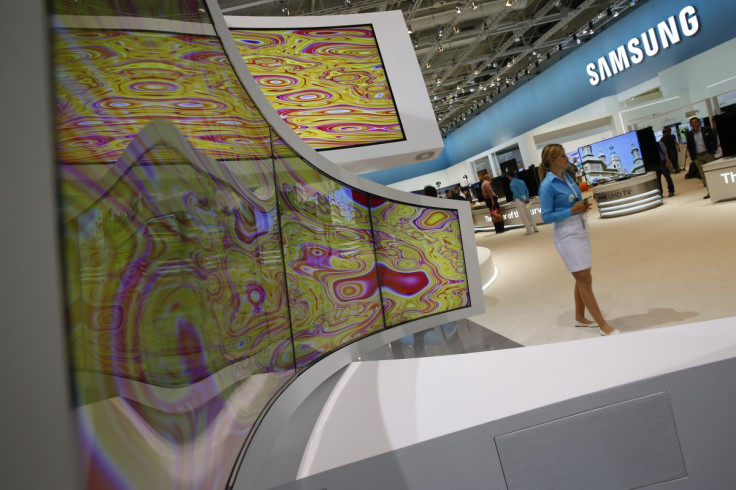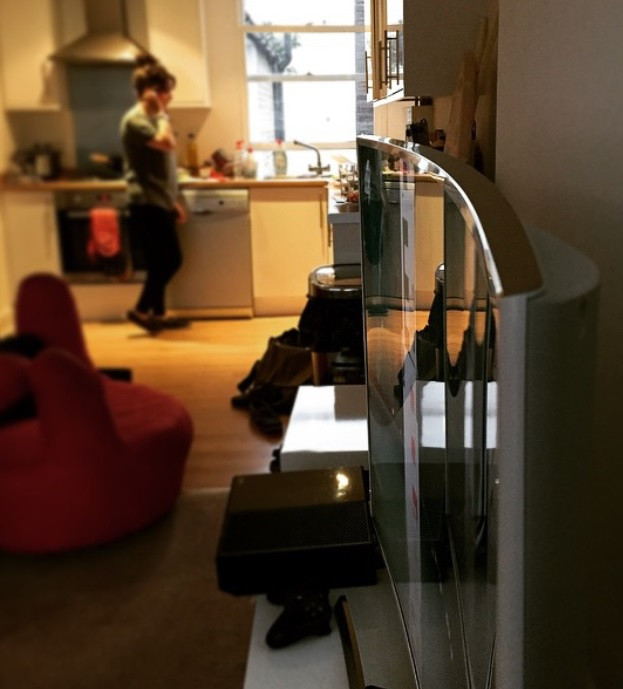Curved televisions: Worth the money or an expensive gimmick?

It is generally agreed that curved objects are somehow more aesthetically attractive that flat, straight ones. Everything from cars and furniture, to handwriting and landscaped gardens – all benefit from a curve here and there. A trip to your local electronics store reveals our TVs are getting curvy now too.
On face value curved TVs make sense. The IMAX screens are curved, so why wouldn't we want the same in our homes? To find out, I took delivery of a Samsung UE55JU6510: a curved 55in Ultra HD television with Smart TV features, according to its box. And for the fashion-conscious readers among you, it was white with matching remotes.
I won't get bogged down in the technical prowess of this TV. It's quite large – although much less intimidating than the previous week's 65-incher – I like the white colour option, and it's Ultra HD (also known as 4K) which means it can display pictures with four times the detail as regular full HD. The picture is, of course, stunning. It's breathtakingly good with Ultra HD content from Netflix and YouTube, HD looks great and even SD is perfectly acceptable.
But let us look at that curve. On the 55in TV I tried the curve isn't as pronounced as on larger sets. I've since seen 85in screens which seem to bend much more, but very few people are going to have the space or budget for such a TV. At £1,200, I feel this TV and other 55in screens like it are about on par with what most cinema-savvy consumers would be willing to splash out on.
Benefits of a curved screen
Before even switching the TV on, I really liked the way it looked. This may seem like a redundant statement because it really shouldn't matter what a switched off TV looks like, but in a house where games consoles are polished and neatly stacked on shelves, controllers are lined up like parked cars, and surround speakers sit equidistant to either side, looks matter.
Switch the TV on and it isn't immediately clear what all the curved screen fuss is about. HD – even 4K – footage looks as good as ever, but not particularly better than before. It certainly isn't the quantum leap going from SD to HD a few years ago was, and it doesn't have the look-at-me clout of the ultimately ill-fated 3D TV.
What curved screens do is alter the way light is reflected by them. The amount of your living which gets reflected in the screen is reduced compared to a flat screen; the reflection is just as strong, but you won't see a dead-on reflection of yourself during every dark scene. The curved screen also helps to add depth to the picture, but this is a change you only really notice once you have been told to look out for it.

Here's what Samsung told me about the benefits of a curved screen:
The curve radius has been established to deliver the best viewing experience from a variety of angles and is based on average viewing distances from the screen. It also offers a wider field of view by shortening the distance between the viewer and the screen's corner when compared to flat screens. The curve, teamed with Samsung's Auto Depth Enhancer technology, creates a sense of true depth perception, whilst delivering clearer images using higher levels of contrast and less external light reflections.
A narrow sweet spot

I don't agree with the screen offering a wider field of view, mostly because the curved screen means it cannot be seen when viewed from the side. Where with a flat screen I could watch TV while in the kitchen – which is to the left of the TV and connected to the lounge – the curved screen made this impossible until I stood at a less obtuse angle.
Sitting right in front of the TV produces the best results, but where a flat screen offers a similar image to the whole room, anyone sitting off-centre felt the curved model was at a disadvantage. It's similar to not sitting in the sweet spot of a surround sound system.
Do curved screens have a scientific or medical advantage?
Curved screens aren't great for those sitting at the edge of the room, but get in the middle and it feels like there are some small benefits.
To find out what these are, I contacted the Moorfields eye hospital in London in hope of an expert comment on why curved images are better.
A plethora of online articles claim the curved screen means every bit of the picture is the same distance from your eyes, whereas the corner of a flat screen are further away than the middle. Sadly, no expert was willing to confirm this to me and it seems fairly unlikely that such a small curve several feet away would stop our eyes from refocusing, as they do naturally and constantly the rest of the time.
Despite "going round the houses" for a comment, the Moorfields press officer was unable to get a vision expert to comment. Undeterred, they approached Andrew Stockman, professor of vision at University College London, who said curved TVs have "fairly minor effects, with several disadvantages" and concluded that they are "not really worth the extra money".
Curves are cool, but they arrived at a difficult time
Curved TVs have come at a difficult time. Almost everyone agrees that the jump from standard definition to HD was worth upgrading to a new TV, Blu-ray player and Sky HD subscription. Fewer were convinced by 3D and now it seems even the manufacturers have given up on the technology – spend several thousand pounds on one today and it is unlikely to even include the glasses you need to watch 3D content. Perhaps because there isn't any, with Sky recently closing down its single 3D channel.
For now, we wait for the jump from HD to UHD – a jump which is still bogged down in discussions over broadcast standards, despite BT Sports pushing ahead with occasional 4K broadcasts. Fewer consumers see the benefit of UHD over HD, while fewer still are willing to buy an expensive new TV – a product typically bought as infrequently as cars and washing machines – so soon after the last one. And one which will look awkward when wall-mounted, as so many large flat-screen TVs are these days.
Curves are cool, there is no escaping that. I even found myself admiring the Samsung when it was switched off, running a hand over its top, inspecting an object that seems alien compared to almost every other screen I have ever seen. (Yes, I just about remember old CRT screens which curved the other way.)
For some, that will be enough. To own something cool which is the shiniest, newest and seemingly the best you can afford is a goal for many, but in this case it feels like TV makers are killing time until they can give us the real Next Big Thing.
HD spoiled us all rotten. So much so, that a worthwhile second act is proving difficult to come by.
© Copyright IBTimes 2025. All rights reserved.





















